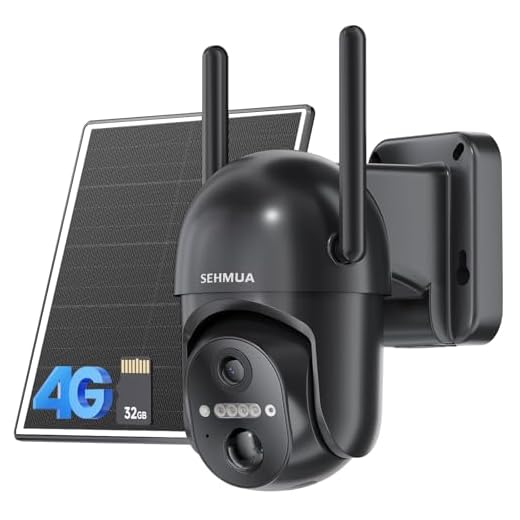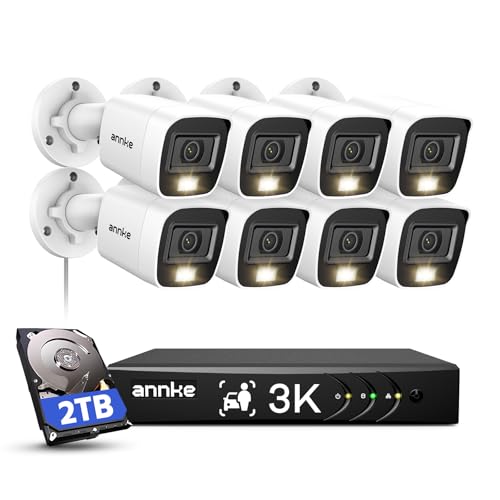




Having security cameras installed in your home or business is a great way to keep an eye on things when you’re not there. With the advancement of technology, it’s easier than ever to monitor your security cameras from anywhere, using just your Android phone.
But how exactly can you view your security cameras on your Android phone?
There are several ways to do this, depending on the type of security camera system you have. In this article, we will explore some of the most common methods for viewing security cameras on your Android phone, so you can always stay connected and keep your property safe.
Step-by-Step Guide to Accessing Security Cameras on Android Device
Accessing your security cameras on your Android device is easy with the right app and setup. Follow these steps to view your security cameras on your Android phone:
- Download and install the appropriate security camera app from the Google Play Store.
- Launch the app and log in to your account associated with your security cameras.
- Select the camera you want to view from the list of available cameras.
- Once the camera feed is displayed, you can control the camera’s movement, zoom in/out, and access other settings.
- Enjoy monitoring your security cameras remotely from your Android device.
Installing the Camera Viewing App
To view your security cameras on your Android phone, you will need to install a camera viewing app. Follow these steps to get started:
- Search for the App: Go to the Google Play Store on your Android phone and search for the camera viewing app recommended by your security camera manufacturer.
- Download and Install: Once you find the app, click on the “Install” button to download and install it on your phone.
- Open the App: After the installation is complete, open the app on your phone.
- Set Up the App: Follow the on-screen instructions to set up the app and connect it to your security cameras.
- Login and View: Log in to the app using your security camera credentials and start viewing the live feed from your cameras on your Android phone.
By installing the camera viewing app on your Android phone, you can easily monitor your security cameras from anywhere at any time.
Connecting Your Security Camera System to Wi-Fi
One of the key steps in setting up your security camera system to view it on your Android phone is connecting it to your Wi-Fi network. Follow these steps to ensure a successful connection:
| 1. | Locate the Wi-Fi settings on your security camera system. This is usually found in the camera’s settings menu. |
| 2. | Turn on the Wi-Fi feature on your security camera system and search for available networks. |
| 3. | Select your Wi-Fi network from the list of available networks and enter the password to connect. |
| 4. | Once connected, test the connection by accessing the camera feed on a computer or monitor. |
| 5. | Ensure that your Wi-Fi network has a strong signal near the location of your security cameras to prevent connectivity issues. |
Setting Up Remote Access to Cameras
Remote access allows you to view your security cameras from anywhere using your Android phone. Follow these steps to set up remote access:
Step 1: Install a Remote Viewing App
Search for and download a remote viewing app compatible with your security camera system from the Google Play Store. Popular options include IP Cam Viewer and tinyCam Monitor.
Step 2: Configure Remote Access
Open the app and follow the on-screen instructions to add your security cameras to the app. You will need to enter the IP address, port, username, and password for each camera.
| Camera | IP Address | Port | Username | Password |
|---|---|---|---|---|
| Camera 1 | 192.168.1.100 | 554 | admin | password |
| Camera 2 | 192.168.1.101 | 554 | admin | password |
Once you have added your cameras, you can remotely access them through the app on your Android phone.
Logging into the Camera App on Android
To view your security cameras on your Android phone, you need to log into the camera app. Follow these steps to access your cameras:
- Open the camera app on your Android device.
- Enter the username and password provided by your security camera system.
- Once logged in, you should see a list of available cameras to view.
- Select the camera you want to view and start monitoring the live feed.
Make sure your Android phone is connected to the internet to access the camera feed remotely.
Adding Cameras to the App
Once you have installed the security camera app on your Android phone, follow these steps to add your cameras:
- Launch the app and navigate to the settings or camera management section.
- Select the option to add a new camera.
- Enter the camera’s IP address, username, and password. Make sure to input the correct information provided by your camera’s manufacturer.
- Follow any additional on-screen instructions to complete the camera setup process.
- Once the camera is successfully added, you should be able to view the live feed on your Android phone.
Repeat the above steps for each camera you want to add to the app. You can usually add multiple cameras to monitor different areas of your property.
Viewing Live Feeds from Security Cameras
Once you have set up your security cameras and connected them to your Android phone, you can easily view live feeds from the cameras using the dedicated app or software provided by the manufacturer.
Here are the steps to view live feeds from your security cameras on your Android phone:
Step 1: Open the App
Launch the app on your Android phone that is associated with your security camera system. This app will allow you to access the live feeds from your cameras.
Step 2: Access Live Feeds
Once you are in the app, navigate to the section where you can view the live feeds. This may be labeled as “Live View” or something similar. Tap on the camera you want to view to access the live feed.
Note: Make sure your phone is connected to the internet or the same Wi-Fi network as your security cameras to view the live feeds.
Adjusting Camera Settings on Android Phone
Once you have successfully connected your security cameras to your Android phone, you can adjust various settings to customize your viewing experience. Here are some common camera settings you can adjust:
1. Camera Angle: You can adjust the camera angle remotely to get the best view of your surroundings.
2. Resolution: You can change the resolution of the camera feed to improve image quality or reduce bandwidth usage.
3. Motion Detection: Enable or disable motion detection to receive alerts when there is movement in the camera’s field of view.
4. Night Vision: Adjust the night vision settings to enhance visibility in low-light conditions.
5. Recording Schedule: Set up a recording schedule to capture footage at specific times of the day.
By adjusting these settings, you can optimize your security camera system for your specific needs and preferences.
Checking Camera Alerts and Notifications
Stay informed about any activity captured by your security cameras by regularly checking the alerts and notifications on your Android phone. Here’s how you can do it:
1. Open the Camera App
Launch the camera app on your Android phone to access the live feed from your security cameras.
2. Check Alerts
Look for any notifications or alerts indicating motion detection, sound alerts, or other triggers captured by your cameras. Tap on the alert to view the corresponding footage.
Tip: Customize your alert settings to receive notifications for specific events or zones to ensure you stay informed about any potential security concerns.
Troubleshooting Common Connection Issues
If you are experiencing connection issues when trying to view your security cameras on your Android phone, here are some common troubleshooting steps you can take:
1. Check Your Internet Connection
Make sure that your Android phone is connected to a stable Wi-Fi network or has a strong cellular signal. Poor internet connection can cause issues with viewing security camera feeds.
2. Restart Your Device and Camera
Try restarting both your Android phone and the security camera. This can help reset any temporary glitches that may be causing the connection problems.
Note: Ensure that the camera is powered on and properly connected to the network.
If these steps do not resolve the issue, you may need to check the camera settings, update the camera firmware, or contact the manufacturer for further assistance.






